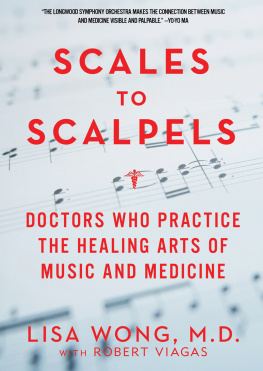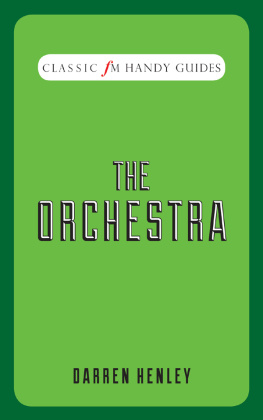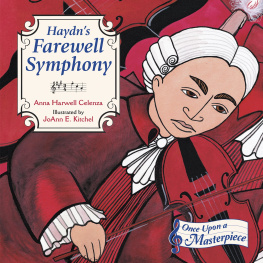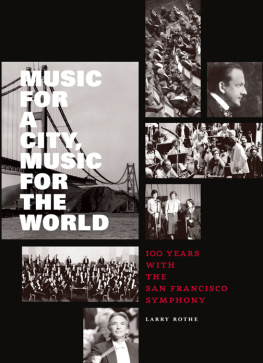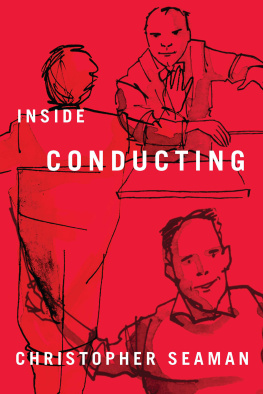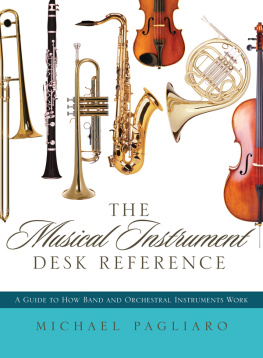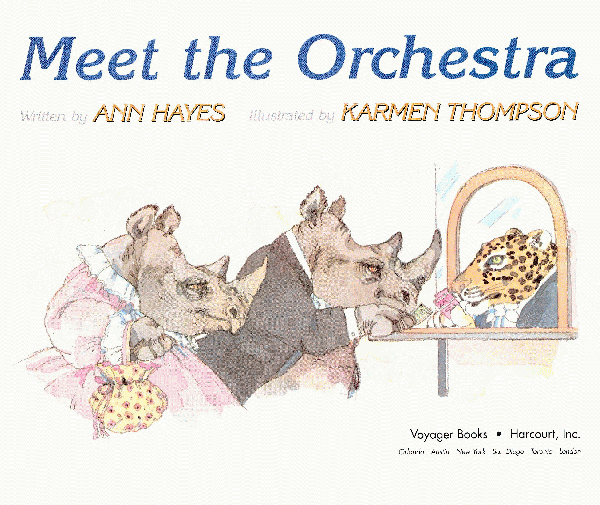
Meet the Orchestra
Written by ANN HAYES Illustrated by KARMEN THOMPSON
Voyager Books Harcourt, Inc.
Orlando Austin New York San Diego Toronto London
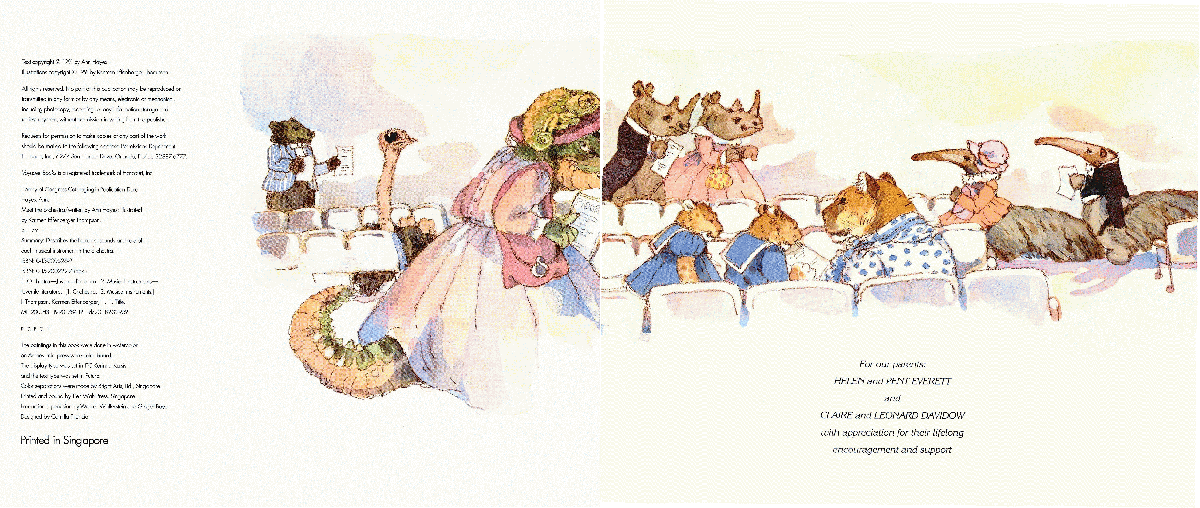
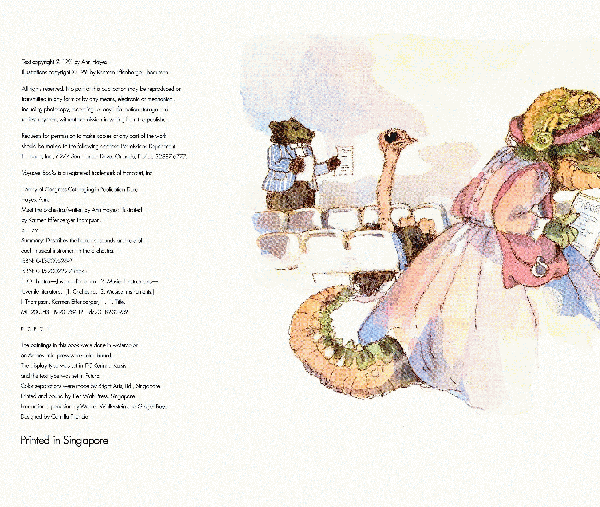
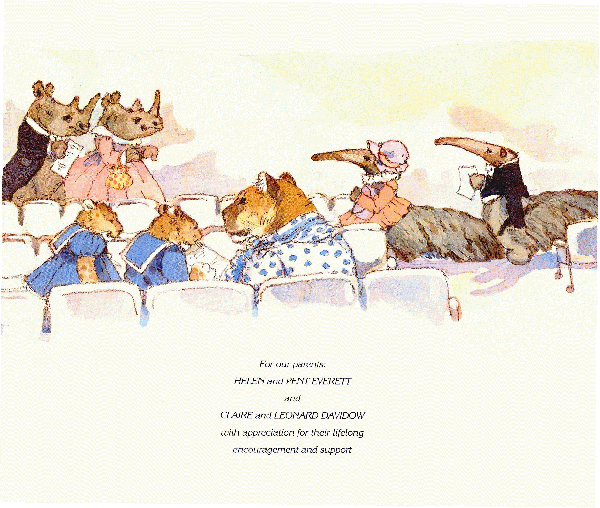
Text Copyright 1991 by Ann Hayes
Illustrations copyright 1991 by Karmen Effenberger Thompson
All rights reserved. No part of this publication may be reproduced or
transmitted in any form or by any means, electronic or mechanical,
including photocopy, recording, or any information storage and
retrieval system, without permission in writing from the publisher.
Requests for permission to make copies of any part of the work
should be mailed to the following address: Permissions Department,
Harcourt, Inc., 6277 Sea Harbor Drive, Orlando, Florida 32887-6777.
Voyager Books is a registered trademark of Harcourt, Inc.
Library of Congress Cataloging-in-Publication Data
Hayes, Ann.
Meet the orchestra/written by Ann Hayes; illustrated
by Karmen Effenberger Thompson,
p. cm.
Summary: Describes the features, sounds and role of
each musical instrument in the orchestra.
ISBN: 0-15-200526-9
ISBN: 0-15-200222-7 (pbk.)
1. OrchestraJuvenile literature. 2. Musical instruments
Juvenile literature. [1. Orchestra. 2. Musical instruments.]
I. Thompson, Karmen Effenberger, ill. II. Title.
ML1200.H3 1990 784.19dc20 89-32959
R Q P O N
The paintings in this book were done in watercolor
on Arches cold press watercolor board.
The display type was set in ITC Korinna Kursiv
and the text type was set in Futura.
Color separations were made by Bright Arts, Ltd., Singapore.
Printed and bound by Tien Wah Press, Singapore
Production supervision by Warren Wallerstein and Ginger Boyer
Designed by Camilla Filancia
Printed in Singapore
For our parents:
HELEN and PENT EVERETT
and
CLAIRE and LEONARD DAVIDOW
with appreciation for their lifelong
encouragement and support
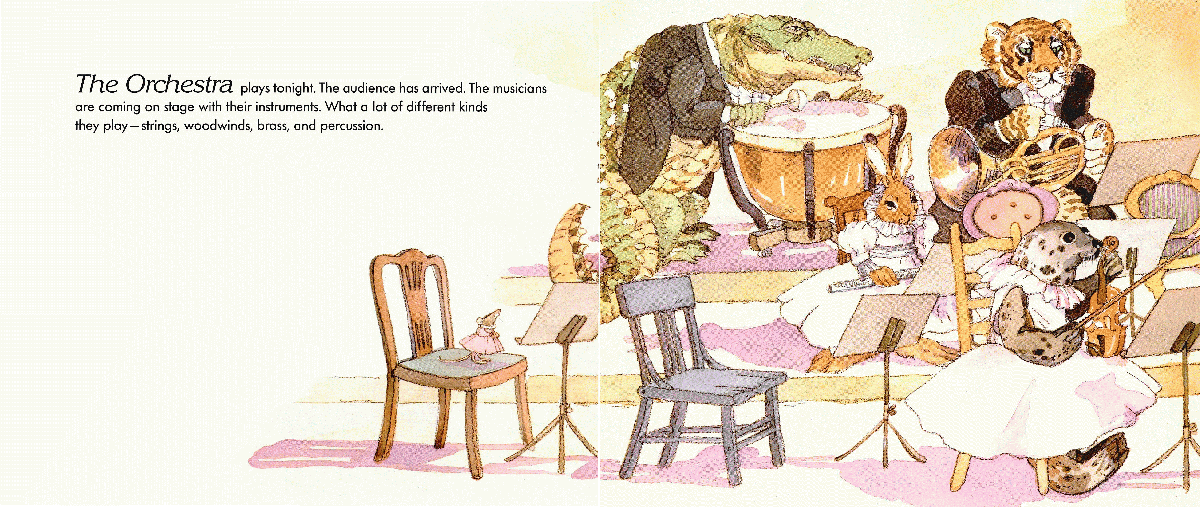
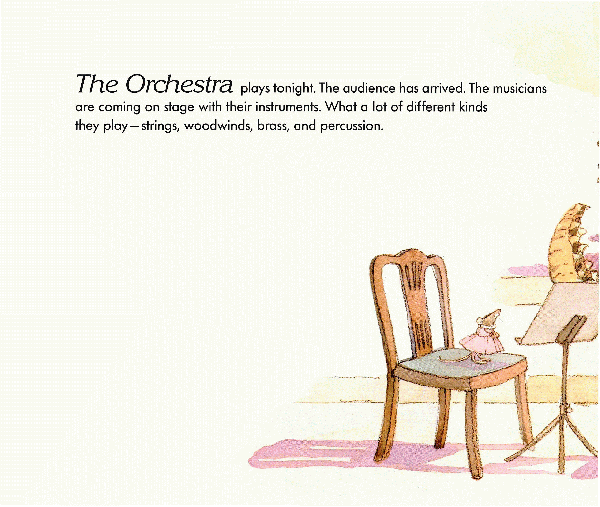

The Orchestra plays tonight. The audience has arrived. The musicians are coming on stage with their instruments. What a lot of different kinds they playstrings, woodwinds, brass, and percussion.
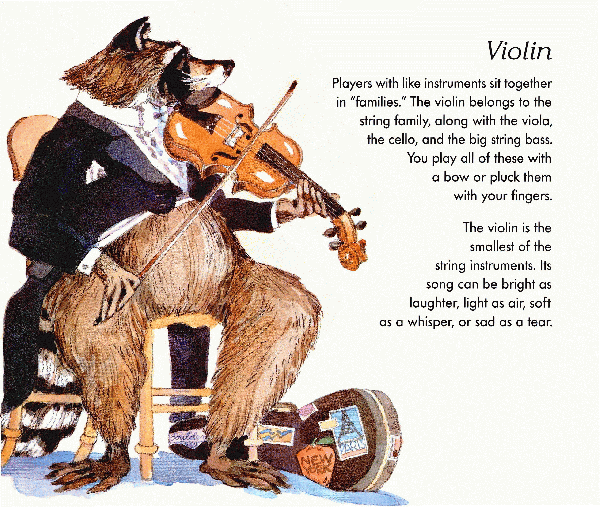
Violin
Players with like instruments sit together in "families." The violin belongs to the string family, along with the viola, the cello, and the big string bass. You play all of these with a bow or pluck them with your fingers.
The violin is the smallest of the string instruments. Its song can be bright as laughter, light as air, soft as a whisper, or sad as a tear.
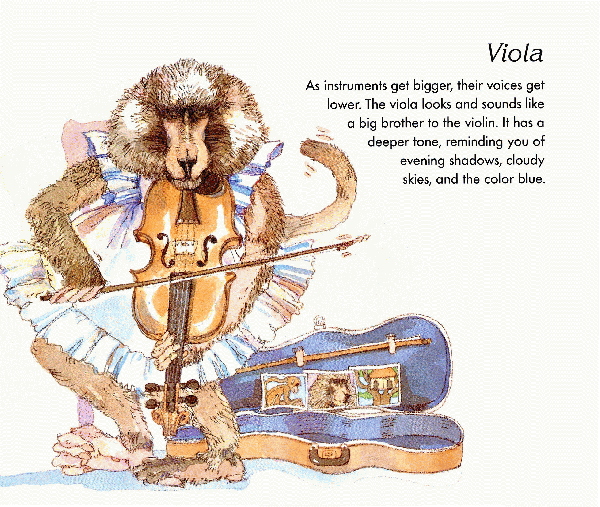
Viola
As instruments get bigger, their voices get lower. The viola looks and sounds like a big brother to the violin. It has a deeper tone, reminding you of evening shadows, cloudy skies, and the color blue.

Cello
You can't tuck a cello under your chin the way you do a violin or viola. It is so big you must rest it on the floor. The cello's rich, mellow voice speaks of deep feelings like joy and sadness. It can remind you of the calm beauty of a drifting swan and of the color purple.
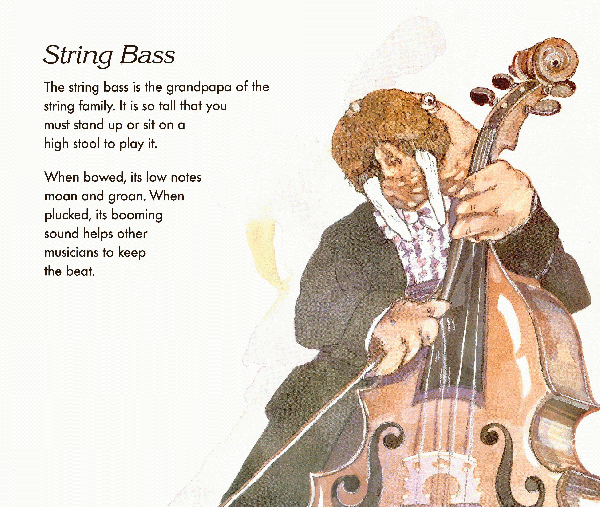
String Bass
The string bass is the grandpapa of the string family. It is so tall that you must stand up or sit on a high stool to play it.
When bowed, its low notes moan and groan. When plucked, its booming sound helps other musicians to keep the beat.

Flute
The flute belongs to the woodwind family, along with the piccolo, oboe, bassoon, and clarinet. You blow into these instruments to play them. At one time, all of them were made of wood; today the flute is often made of silver or even of gold.
To play the flute, you hold it sideways, tighten your lips, and blow across the air hole. With practice, you can trill like a bird or play slow, quivering notes as cool as a mountain stream.
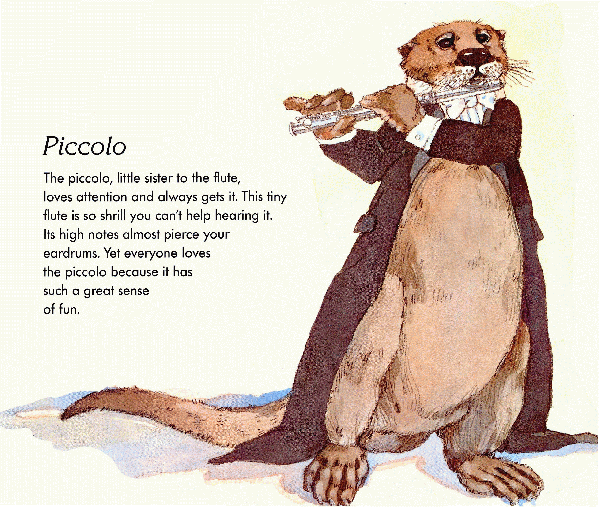
Piccolo
The piccolo, little sister to the flute, loves attention and always gets it. This tiny flute is so shrill you can't help hearing it. Its high notes almost pierce your eardrums. Yet everyone loves the piccolo because it has such a great sense of fun.
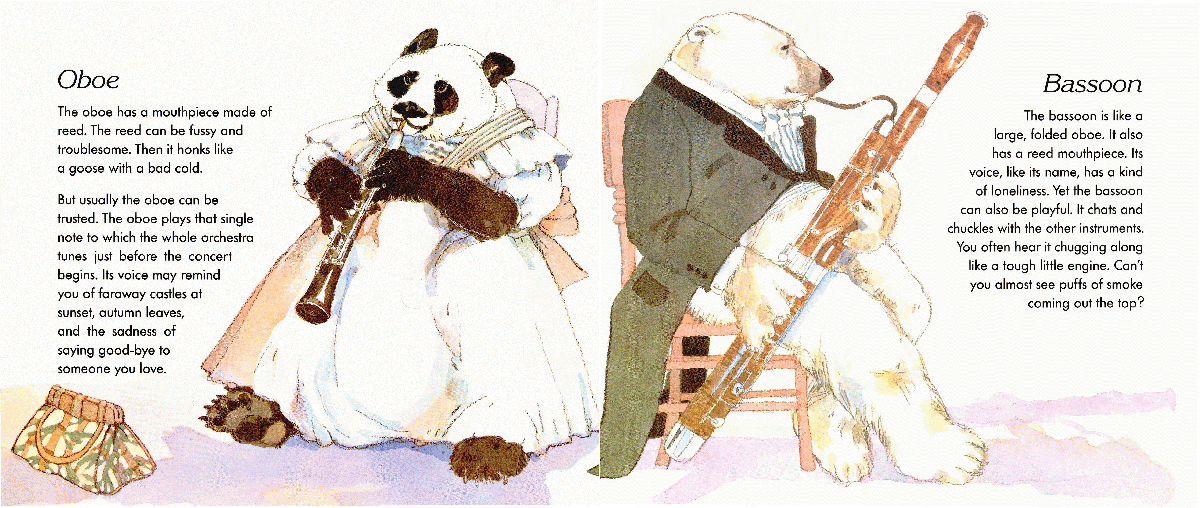

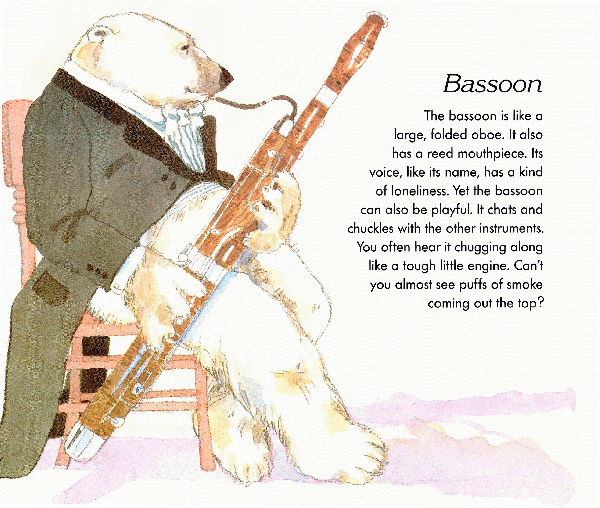
Oboe
The oboe has a mouthpiece made of reed. The reed can be fussy and troublesome. Then it honks like a goose with a bad cold.
But usually the oboe can be trusted. The oboe plays that single note to which the whole orchestra tunes just before the concert begins. Its voice may remind you of faraway castles at sunset, autumn leaves, and the sadness of saying good-bye to someone you love.
Bassoon
The bassoon is like a large, folded oboe. It also has a reed mouthpiece. Its voice, like its name, has a kind of loneliness. Yet the bassoon can also be playful. It chats and chuckles with the other instruments. You often hear it chugging along like a tough little engine. Can't you almost see puffs of smoke coming out the top?
Next page


